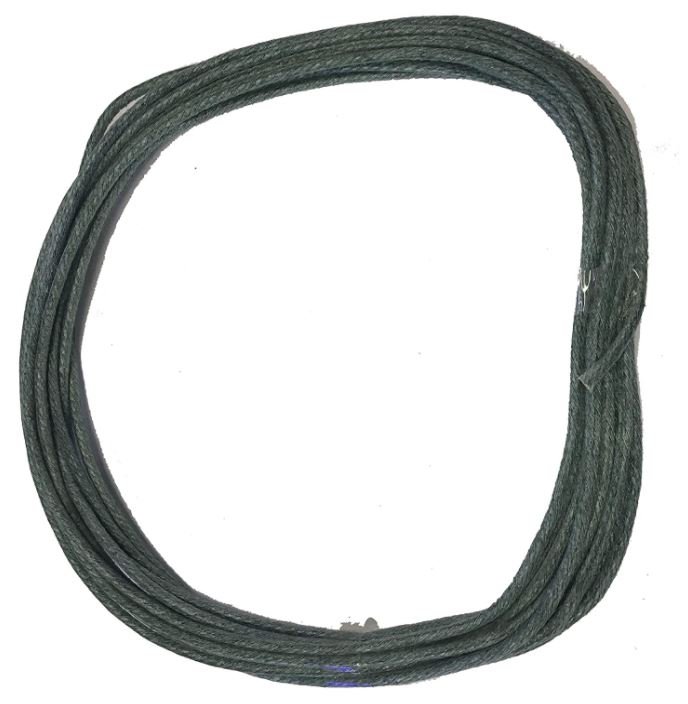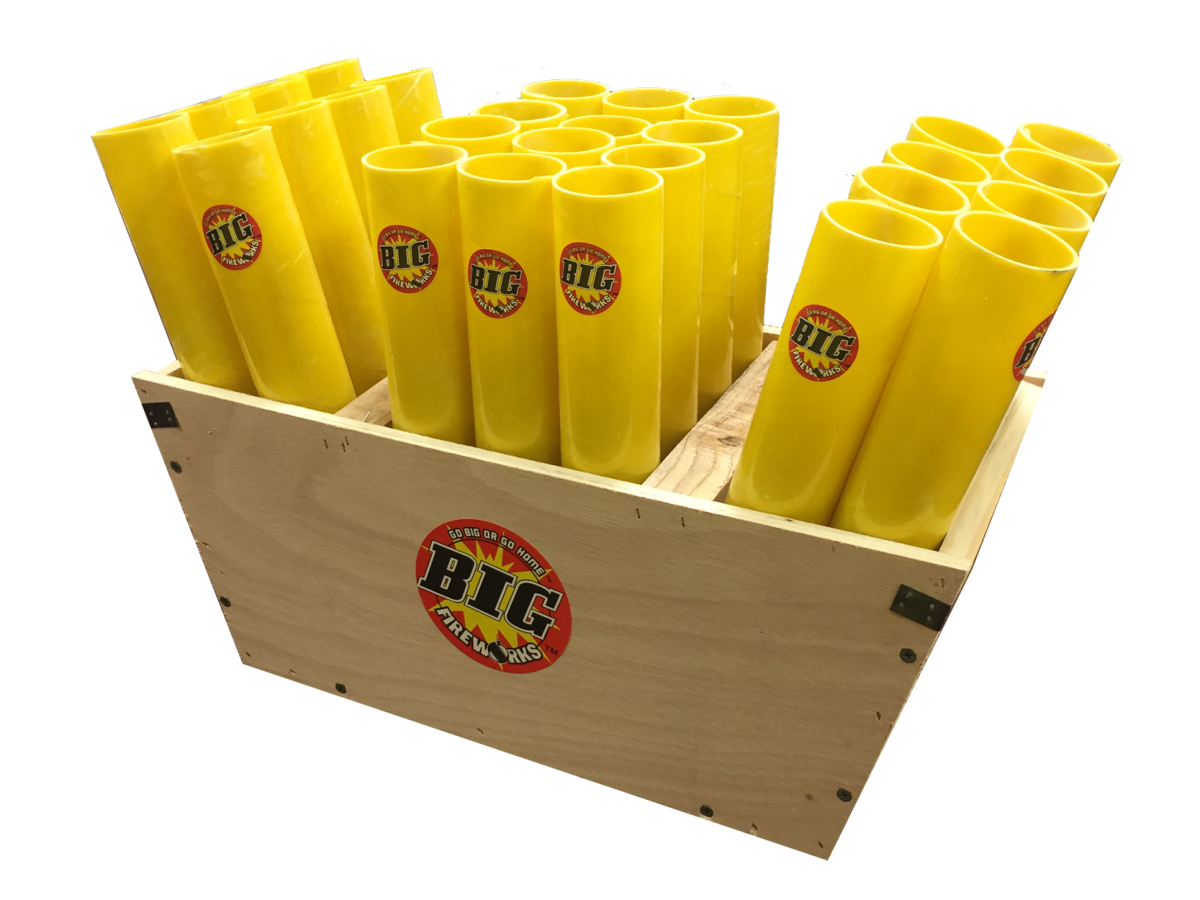Blue View – How Fireworks Work - Big Bang Theory
/People around the world enjoy fireworks
We’ve all had the opportunity to see and enjoy some spectacular fireworks displays. It’s not just an American thing, of course… everywhere we’ve traveled, people throughout the world have a special fascination with the magic of a really good aerial fireworks display.
It’s always been a mystery to me how those aerial fireworks are designed. How do they launch the rockets and generate all those complex patterns? What makes the different colors? Do they buy them from the Acme Fireworks Company, and, like Wile E Coyote, light a fuse to set them off? Let’s unwrap a typical aerial display shell and find out…
Your basic Acme Fireworks Company rocket
Basic construction
A basic package if six fireworks shells that anyone can buy online
This is what’s inside a fireworks shell
Outer shell.
Aerial fireworks shells are usually either round or tubular. In either case, the outer shell material is a cross between cardboard and papier-mache. If the shell is tubular shaped, the top of the tube is closed, and the tube is filled from the bottom. If the shell is round, each half-sphere is filled, then the two halves are bonded together.
Fuse.
Just like the old cowboy movies and Roadrunner cartoons, each shell is launched by lighting its fuse. Originally, fuses were trails of black powder wrapped in paper. This evolved to string, impregnated with black powder. Even today, ordinary firecracker fuses are not much more sophisticated – they’re basically a string coated with an emulsion made of black powder and glue. Fuses come in all different burn speeds. Some are slower, burning at 10, 15, or even 25 seconds/foot. Others are quicker, burning at 2-3 seconds/inch. The quick fuses that are attached to the shells burn very quickly – somewhere around 0.05 seconds/foot. To avoid mixing them up, fuses are usually color-coded. The fast fuse in the diagram takes under a second to burn from one end to the other. Obviously, you don’t want to be anywhere close to the shell when it is lit, and how this one is lit is explained later. The timed fuse is a slower burning fuse. Its burn speed and length are carefully calculated so that the shell explodes at the desired altitude. The photos below show some typical fuses.
Launch tube.
Also known as a mortar tube, this is what holds and aims the shell until it is launched. The shell must fit just tightly enough to slide easily into and out of the tube. Unlike military mortars which are used repeatedly, a fireworks launch tube is typically only used once per display and can be made of fiberglass or PVC. An average display will use hundreds of tubes, while some of the bigger displays will use thousands of mortar tubes. The tubes can be purchased singly or in racks.
A 28 tube rack
Black powder.
Black powder is what launches the shell and causes the explosion, and the formula hasn’t changed much since the Chinese discovered it a millennium ago… 75 percent potassium nitrate (aka saltpeter), 15 percent charcoal, and 10 percent sulfur. Black powder is considered a low explosive because its burn rate is slower than other explosives like dynamite. It’s well suited to launching a rocket because it generates enough pressure to fire the projectile but not enough to rupture the launch tube.
Stars.
The stars are what cause the brilliant flashes of light. The usual recipe is as follows: make a slurry of potassium perchlorate and water, and add certain salts for color. Mold the slurry into the desired shape – balls, cubes, or cylinders, then let it dry out and harden. Add a coating of black powder to serve as a primer. The result is a very dull, grey object, that when ignited, burns like a sparkler on steroids. Different elemental salts create different colors as shown in the diagram. The stars can be made to change colors by adding one type of salt to the batch and forming a small ball, letting it dry, then adding a different color salt to the slurry and re-coating the star. Making the stars is an extremely hazardous profession, and serious precautions are taken to prevent catastrophic accidents. Even the smallest spark can cause the batch to explode, so the air is humidified, water is sprayed on the floors, workers wear only cotton clothing, and anti-static mats are used. Batches are kept small and mixed in garage-sized, isolated buildings with only one worker allowed in at a time. The buildings are usually surrounded by explosion barriers and well away from other buildings. If all that wasn’t enough to seriously contemplate your career choice, the dust is also hazardous to the lungs, so respirators must be worn.
How the different colors are generated
Completed stars
How it all works.
The shell is placed into the launch tube and the fast fuse is attached to a length of slower burning fuse. This fuse can be ignited electrically or with a lighter. Once the spark reaches the end of the slower fuse, the fast fuse is ignited, and within milliseconds, the spark travels to the end inside the lift charge. Note that both the fast fuse and the timed fuse inside the shell must be sheathed to prevent sparks from detonating the black powder prematurely. When the spark reaches the end of the fast fuse, the timed fuse is ignited, and at the same time, the lift charge is detonated. This detonation causes the pressure to build up inside the tube until the shell is launched, and is forceful enough to send the shell high into the sky.
When the spark reaches the end of the timed fuse, the inner layer of black powder explodes. This, almost instantaneously, ignites the inner circle of stars, detonates the outer layer of black powder, and ignites the remaining circle of stars. The shell depicted in the sketch would form two concentric rings of stars, all burning brightly while floating down.
Special effects.
Fireworks manufacturers have spent hundreds of years perfecting the process and coming up with all sorts of special effects, but almost all of these effects are determined by the placement of the stars and black powder, the shape of the shell, and the contents of the stars. For example, the stars can be made to whistle, produce a big bang, or whiz around in the sky, all by varying the contents of the stars. Cylinder-shaped shells can produce tree and flower-shaped displays while round shells produce round displays. If we wanted a happy face, as an example, we’d change the layout of the interior stars as shown in the figure.
How a smiley face shell would be constructed
What it looks like in the sky
I’ll end with some trivia...
Some Guinness World Records:
The largest aerial shell being moved into the launch tube
Largest Aerial Shell: The shell measured 56.75 inches in diameter and had a shell 7 inches thick. It required a mortar 62 inches in diameter and 26 feet deep. The shell closed the fireworks display for the Steamboat Springs 2020 Winter Carnival.
Largest Firework Display: This display consisted of 810,904 fireworks at the 2016 New Year celebrations, in the Philippines. The display began at midnight 2016 and lasted for 1 hour 1 minute 32 seconds, in the pouring rain.
Shortest Display (Unintentional): A fireworks display at the Dorset Festival in the UK was intended to set a world record for the longest fireworks display in August 2009. Unfortunately, the initial rockets set fire to the barge full of fireworks, and all 110,000 shells exploded and burned brightly for just six seconds. The positive side… had they set the record for the longest display, it would have been short-lived, while their record for shortest display still stands.
Most fireworks shells fired per minute: The New Year's Eve fireworks in Dubai, on New Year’s Eve, 2013 saw 479,651 shells fired in just six minutes – a rate of 79,941 fireworks per minute. Not as many per minute as the display at the Dorset Festival above, however. Maybe this category should be renamed as the ‘most fireworks shells fired per minute (intentional)’.
Largest Commercially Available Firework: This is the Super Crown which is 2 feet tall, has a 16-inch shell and is packed with 75 pounds of black powder and explosives. It takes eight seconds to reach 1600 feet, at which point the internal stars are scattered about ¼ mile. I’m not sure of the cost, but the launch tube alone will set you back about $300.
Now that I’ve satisfied my curiosity about how fireworks work, another mystery for me is how are those massive fireworks displays choreographed? How do they plan the display and time every one of the hundreds, thousands, or in some cases, even hundreds of thousands of shells? How long does it take to set up? Those are some of the questions I plan to look into for next week. Stay tuned...
“If you are curious, you’ll find the puzzles around you. If you are determined, you will solve them.”














